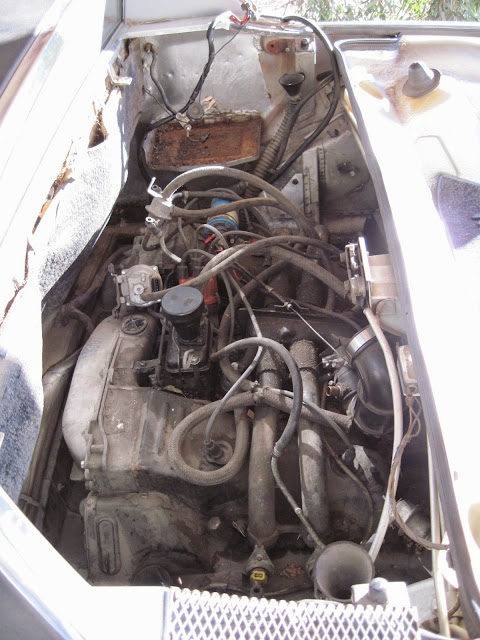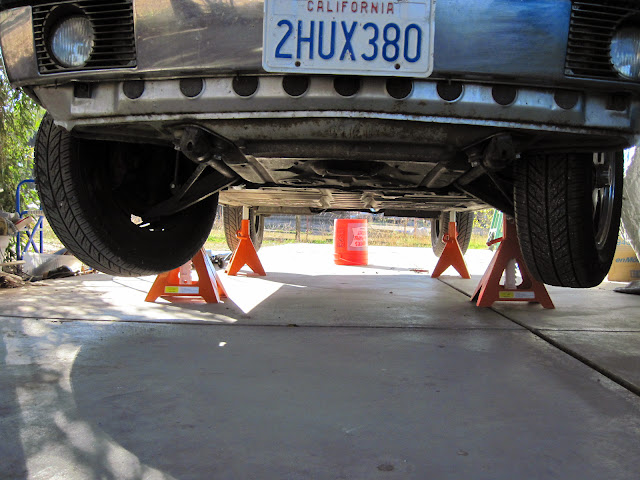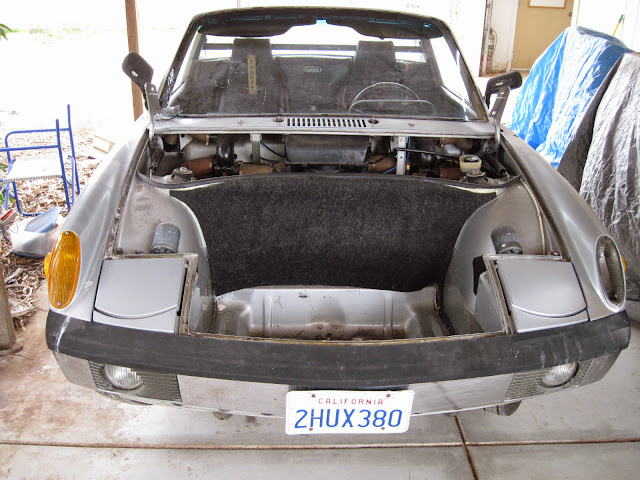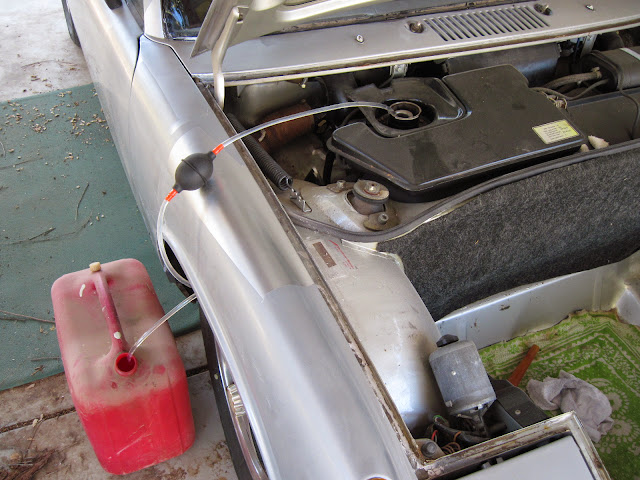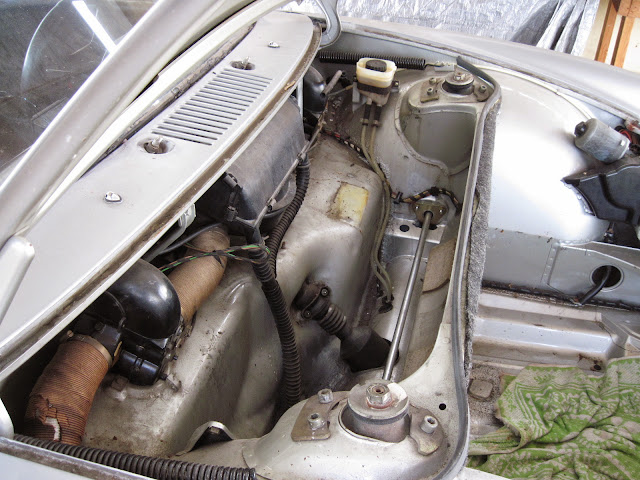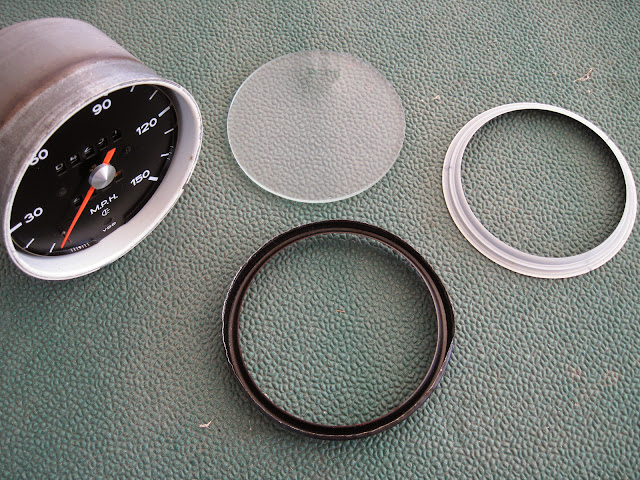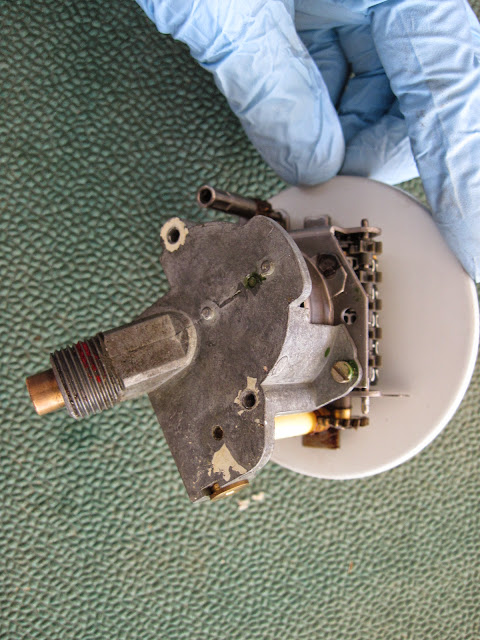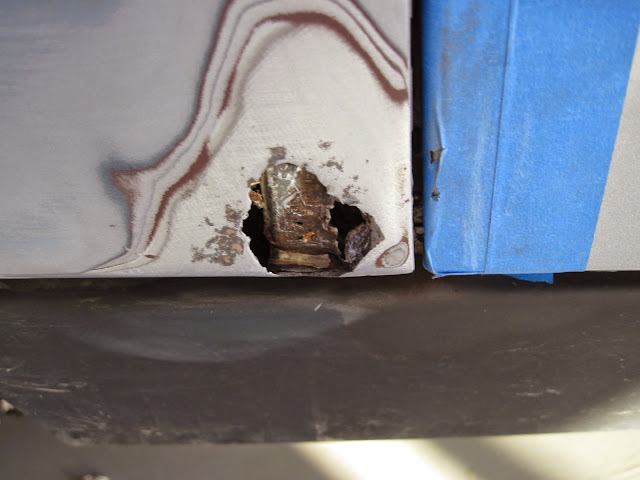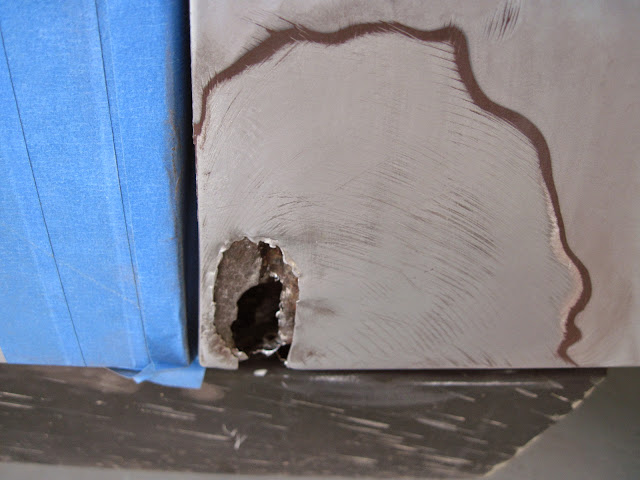With the gas tank gone, there is no going back to an internal combustion ride! I began to follow the Haynes manual process for engine removal. It said to remove the hoods, then the battery. First actual work on the engine is to slip off the air hoses and remove the air box. Here we are at that point.
You can see on the far side that the "hell hole" around the battery has been previously worked on, but the rust was building up again on the battery holder itself. Time was right to get this fixed anyway.
In a clear case of "The solution is left to the reader", the Haynes manual says "Working logically, detach the electrical leads which go to the engine from the various looms." Uh yeah, thanks for all of the detail. There are 2 major wiring harnesses: the fuel injector computer and the high voltage to the starter motor on the underside of the engine. Here's the fuel injection computer harness:
Next, the Haynes manual says "Working logically, detach the various vacuum and fuel hoses from the engine." Awesome. So, with this completed, the engine is only held into the car via the underside greasy bits.
Getting underneath the car, I removed the ground strap, the speedometer cable, the clutch cable and pulley, the gearshift rod and the heater boxes and tubing. The next step in the manual is to remove the driveshafts, but in a stroke of bad planning, I didn't order the special 12-point star bit needed to pull off the CV joints. With a few more hours of sunny and cool Sunday, I decided to pull the exhaust. I had initially thought to leave it attached so I can sell the engine and exhaust as a single piece, but getting underneath and looking at it, I decided it would be a good idea to take it off while I had the chance. The headers and muffler look nearly new which is great, but whoever put it on really didn't do a good job - there were several missing screws and bolts, and one of the sheet metal heat guides wasn't even attached! It was just jammed in place and probably banged around on every bump. One big issue was a missing bolt on one of the exhaust ports! I don't know if it's the way it's designed, but there is no exhaust manifold gasket at all. The fit is tight, but not perfect so I suspect there was a lot of blow-by.
So I ordered the star bit from Pelican Parts and expect to drop the engine next weekend.


